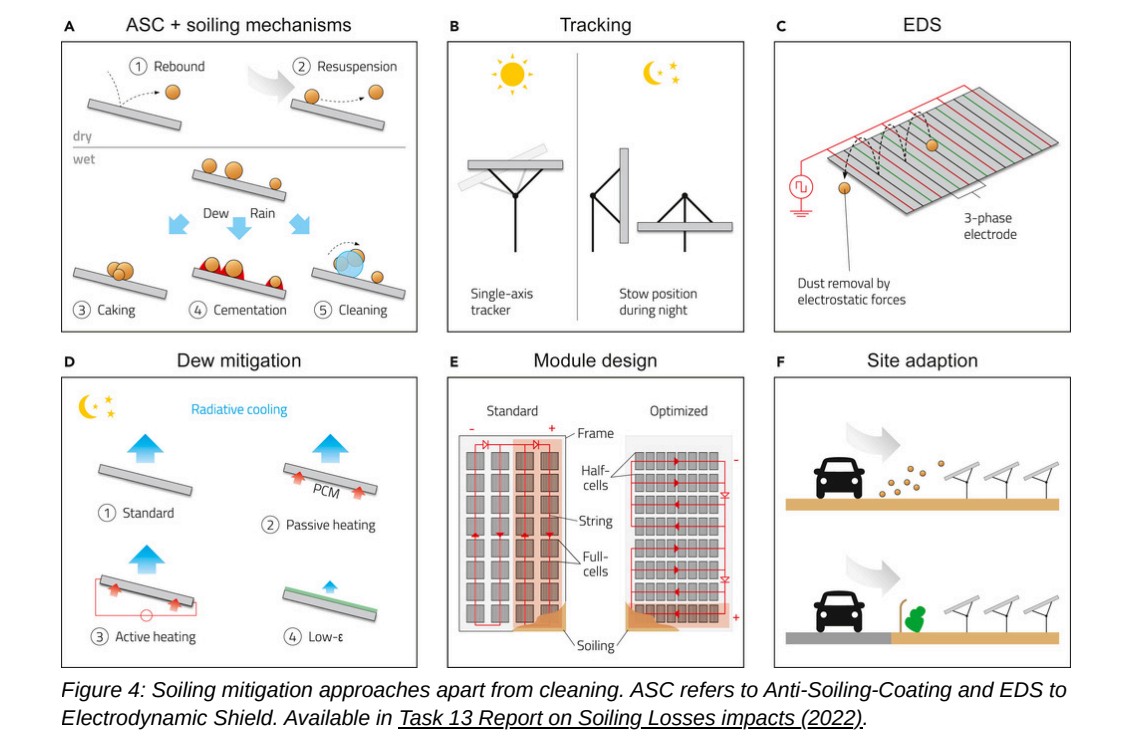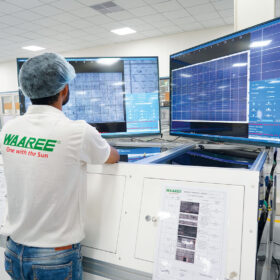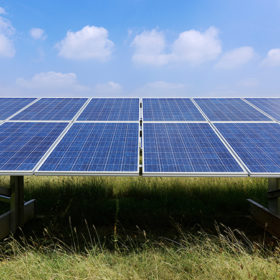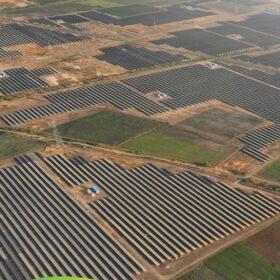Soiling on solar installations costs the global solar industry annual revenue losses totaling billions of euros, according to a fact sheet published by the IEA-PVPS.
The fact sheet explains that soiling is a leading cause of underperformance in solar installations worldwide and is responsible for between 4% and 7% of global energy losses.
Soiling is an umbrella term accounting for the accumulation of dust, pollution and biological debris on PV modules. Types of soiling can be split into natural aerosol deposits such as mineral dust and sea salt, anthropogenic aerosol deposits including industrial emissions and vehicle exhausts and macroscopic deposits and growths such as leaves and bird droppings.
IEA-PVPS warns soiling may become a more severe challenge in the face of climate change, due to incidents such as droughts and dust storms, meaning mitigation efforts are becoming more important to implement.
The fact sheet says there is no one size fits all solution to soiling, advising that mitigation strategies must be tailored to local conditions and site characteristics. While cleaning is outlined as the most common solution for soiling, IEA-PVPS advises that soiling mitigation should begin before operation through the adoption of soiling prevention measures and designs that facilitate cleaning operations.
Cleaning technologies should be selected based on site-specific factors including water availability, system layout and budget, the fact sheet adds, while cleaning schedules must be optimized to balance revenues from recovered energy and operational costs, as cleaning too much can lead to wasted operating expenses.
The fact sheet also provides guidance on soiling monitoring and forecasting. It recommends measurements, data acquisition and processing methods are selected in accordance with best practices to ensure the expected level of accuracy.
The work is a collaboration between IEA-PVPS Task 13, which covers the reliability and performance of PV systems, and IEA-PVPS Task 16, that covers solar resource data for high penetration and large-scale applications.
Last December, an international research team completed Europe’s first continent-wide techno-economic analysis of PV soiling losses. In March, Chinese scientists concluded tilt angle has the greatest impact on power losses caused by soiling.
This content is protected by copyright and may not be reused. If you want to cooperate with us and would like to reuse some of our content, please contact: editors@pv-magazine.com.








I want become a dealer and instolation